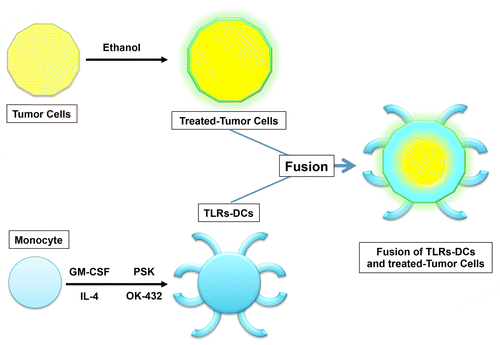Figures & data
Figure 1. Fusions generated with ethanol-treated tumor cells and activated dendritic cells. The treatment of neoplastic cells with ethanol results in the emission/exposure of calreticulin (CRT), heat-shock proteins (HSPs) and high-mobility group box 1 (HMGB1) as well as in the blockade of transforming growth factor β1 (TGFβ1) signaling, but not in decreased expression of MHC class I molecules and tumor-associated antigens such as mucin 1 (MUC1). Ethanol-treated malignant cells fused to dendritic cells (DCs) activated by simultaneous exposure to Toll-like receptor 2 (TLR2) and TLR4 agonists inhibit the production of multiple immunosuppressive factors including TGFβ1 while stimulating the secretion of interleukin-12 and HSPs. Such immunogenic DC/cancer cell fusions activate T cells that produce high levels of interferon γ (IFNγ), resulting in the elicitation of MUC1-specific immune responses, at least in vitro.
